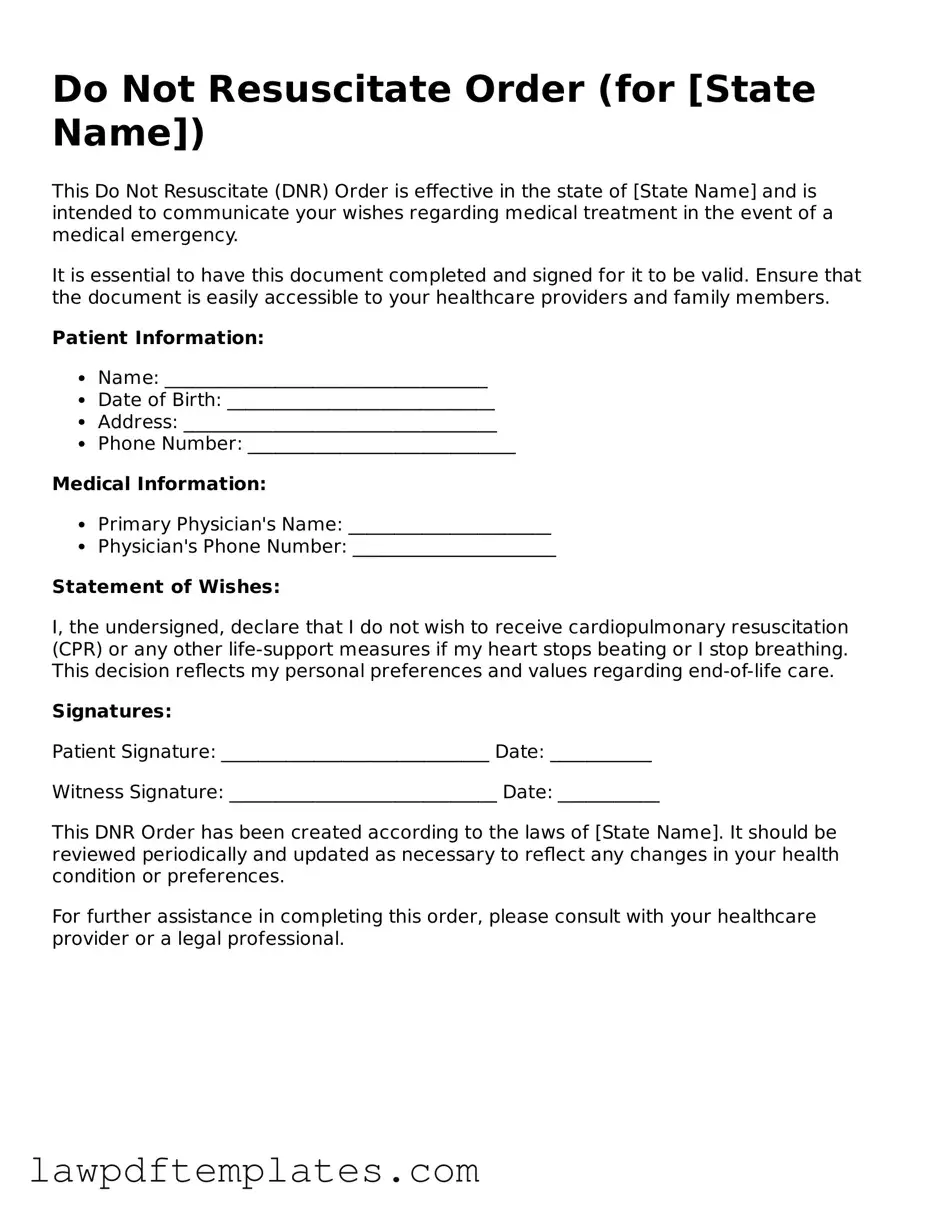Do Not Resuscitate Order (for [State Name])
This Do Not Resuscitate (DNR) Order is effective in the state of [State Name] and is intended to communicate your wishes regarding medical treatment in the event of a medical emergency.
It is essential to have this document completed and signed for it to be valid. Ensure that the document is easily accessible to your healthcare providers and family members.
Patient Information:
- Name: ___________________________________
- Date of Birth: _____________________________
- Address: __________________________________
- Phone Number: _____________________________
Medical Information:
- Primary Physician's Name: ______________________
- Physician's Phone Number: ______________________
Statement of Wishes:
I, the undersigned, declare that I do not wish to receive cardiopulmonary resuscitation (CPR) or any other life-support measures if my heart stops beating or I stop breathing. This decision reflects my personal preferences and values regarding end-of-life care.
Signatures:
Patient Signature: _____________________________ Date: ___________
Witness Signature: _____________________________ Date: ___________
This DNR Order has been created according to the laws of [State Name]. It should be reviewed periodically and updated as necessary to reflect any changes in your health condition or preferences.
For further assistance in completing this order, please consult with your healthcare provider or a legal professional.
